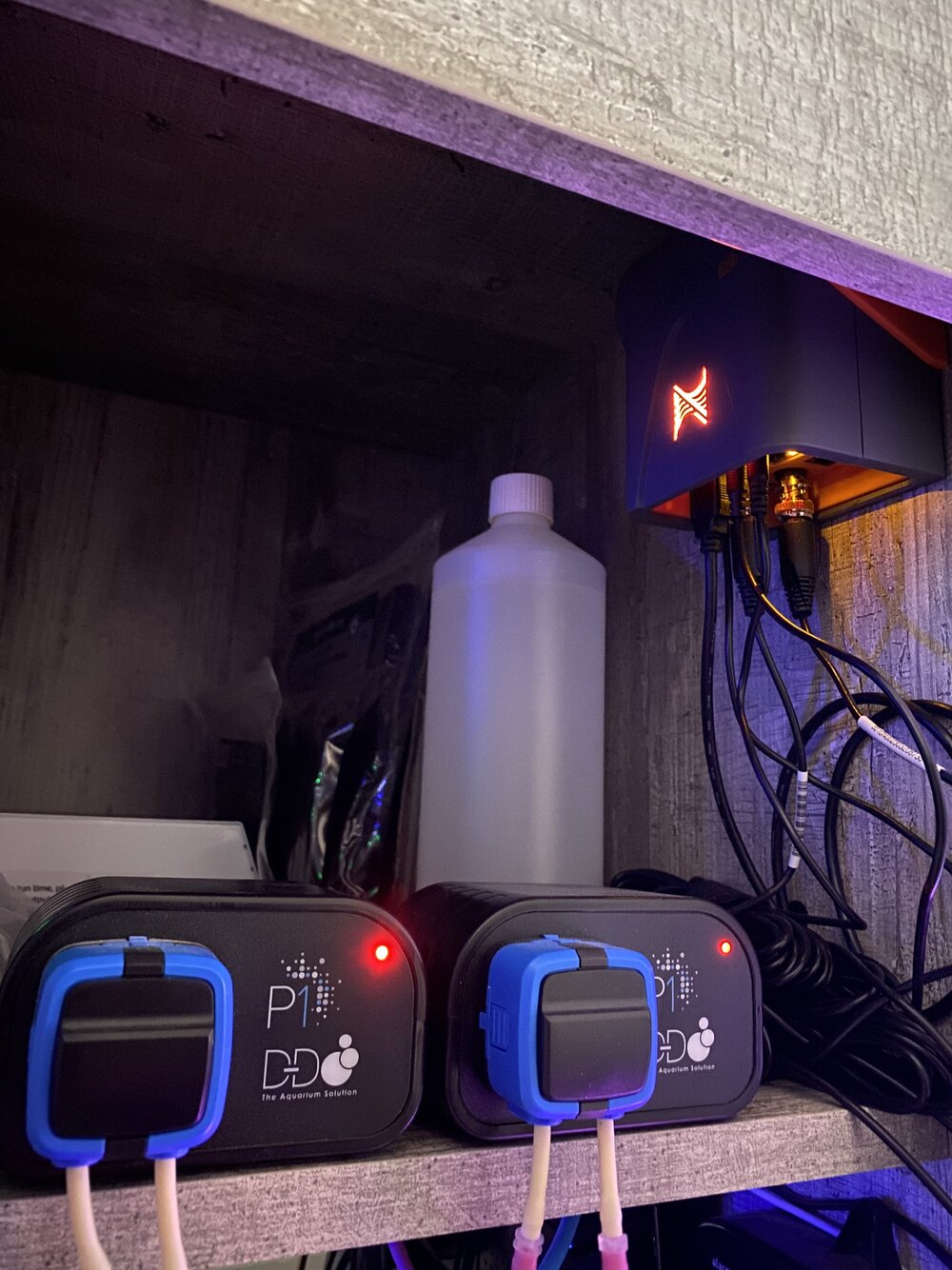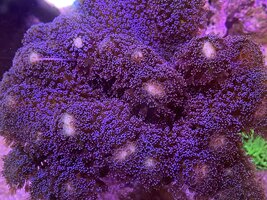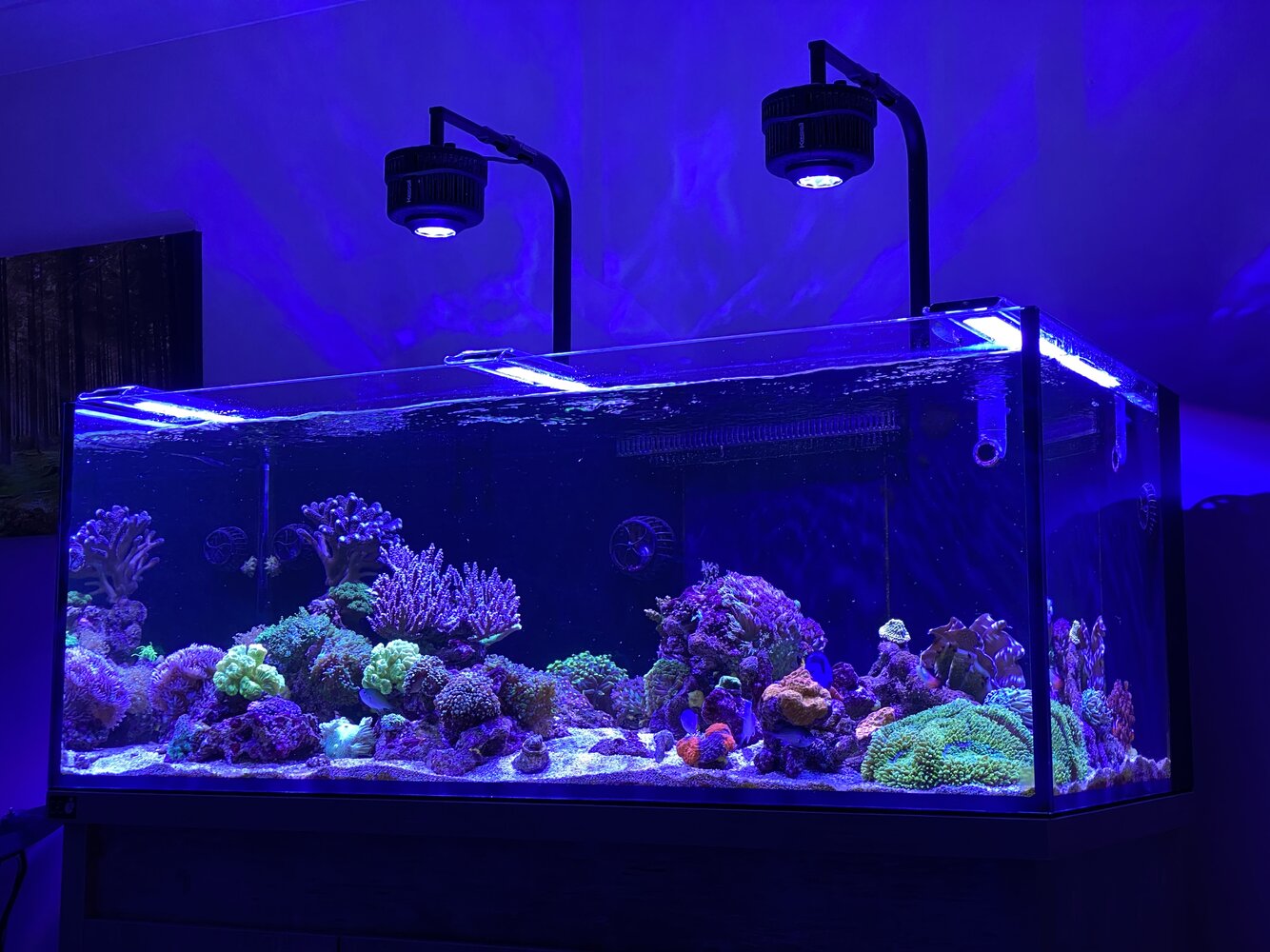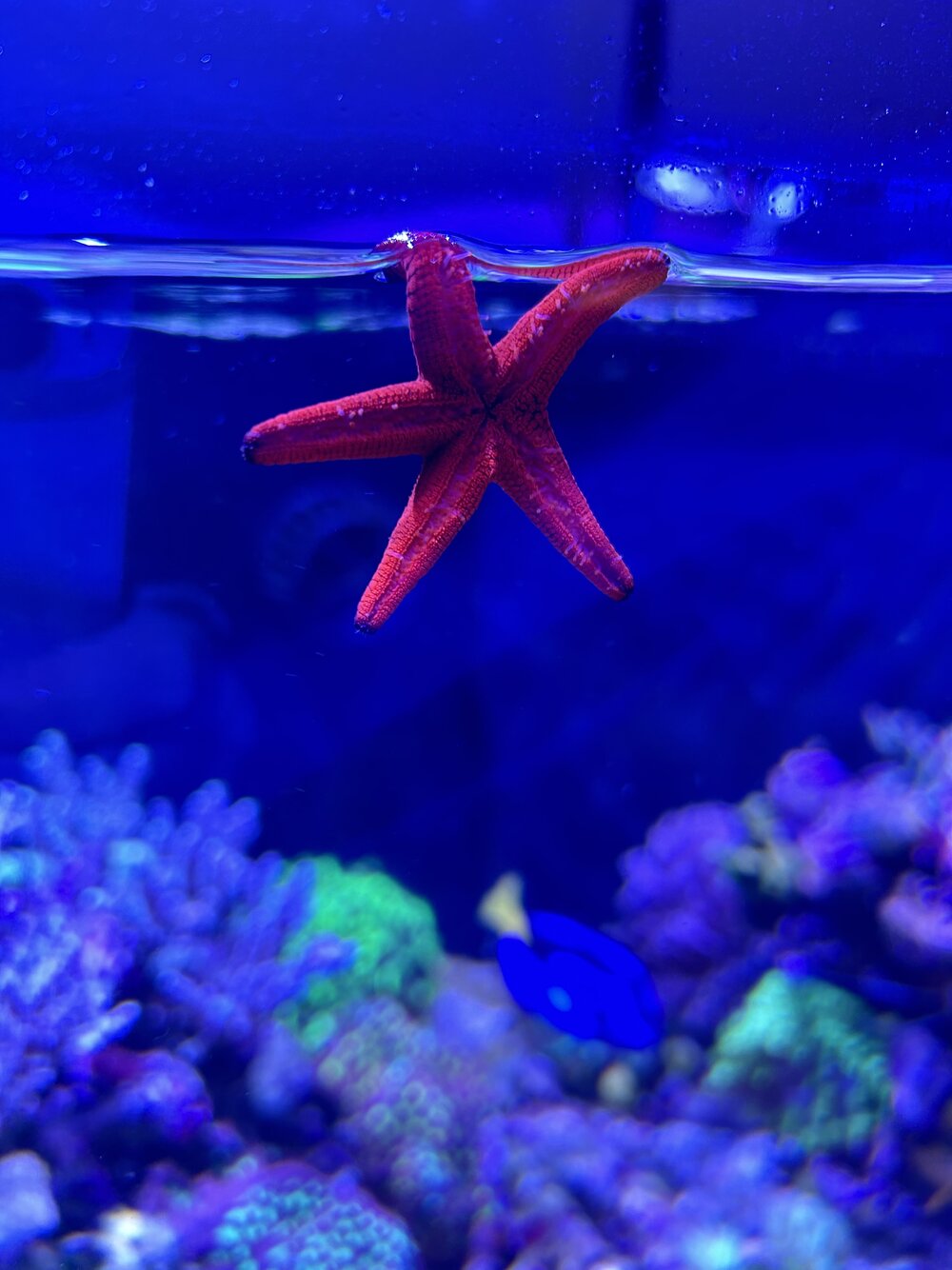Hello again, it’s been a couple of months so lots to share, long post warning ⚠️ Part 1 of 2…
The tank has made quite a few demands in this time due to its age so required a fair few adjustments.
First was nitrate and phosphate control beyond water changes, numbers were climbing despite 1/3 weekly water changes. A lot of the rock is over two years old now and it’s porosity replaced by crud. Utilised NO3 : PO4 - X (carbon dosing) to draw out reserves in the system, kept this up for about three weeks.
It worked, got numbers that would make almost all reefkeepers happy… but with the power of two eyeballs it was plain to see that this wasn’t providing the diversity we desire; opaque bacterial film on the glass rather than algal film to scrape off, lifeless clean sand, absence of copepods. Back to the drawing board… Carbon dosing be gone!! 🪄 ❌
Not a worthless exercise however. With the refresh/depletion of the nutrient stores in the hardscape we’re back to predictable weekly numbers when testing for now. Hardscape almost like new. Next system change…
Increased flow… sort of. Used to have the same flow 24 hours per day.
Now, 12 hours of firm wave flow during lighting period, 12 hours of consistent reduced flow at night. Corals happier exhibiting feeding responses at night, fish happier resting in calm water, more crud making it into the sump everyday; equity. Can now mainly concentrate on sump cleaning during water changes. Bang for your buck has just gone up.
Redesigned the sump to meet the new needs. UV out, reactors for activated carbon and phosphate removal out, refugium in:

Filter roller and skimmer in the first chamber with some water bypassing the filter roller:

Pint of pods in and abundance of them back in the display - winner.
Next… Apex monitoring of pH and ORP:

In a nutshell, pH range was 💩 😮 💩
At night plummeting to 7.5 and at highest 7.9 with the windows all open, 7.7 being the high with a sealed building. Not trusting the one calibrated probe, used two other pH testing methods and yep, pH pretty shocking for a reef tank. Daft thing is looking at the tank and coral growth, you would never suspect it was oscillating in such a low range.
Good news is uptake of Ca and dKH for skeletal growth is high… valid reason for dosing Kalkwasser (lime water) which gives a pH boost by utilising co2 to release alkality.
Kalkwasser now being dosed day and night every two hours:

Refugium light running at night now as well and pH range is 7.8 low and 8.1 high. Suspect as the chaetomorpha mass increases we can shift this range up a couple of points to 8.0 and 8.3. Give it some time…































